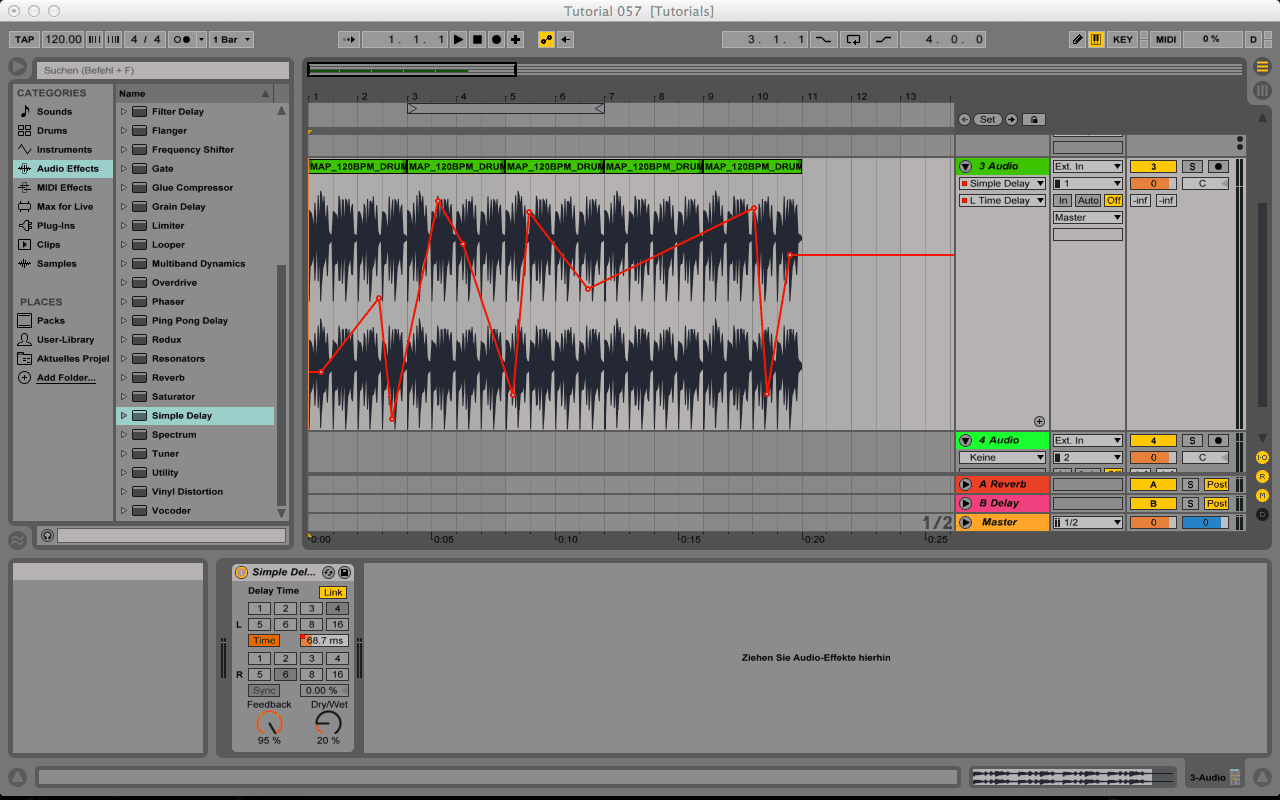
The plugin delivers 14 monumentally large delay algorithms with wildly different tonal characteristics. Super Massive by Valhalla DSP is a freeware delay VST plugin designed to make any piece of audio sound epic.
Simple delay ableton stereo free#
Our aim was to list all the best free delay plugins, covering as many options as possible. You can use a delay plugin like Valhalla Super Massive to create cinematic soundscapes and other types of monumental sounds that will dominate the sound stage. Likewise, delay plugins are indispensable sound design tools. For example, you can use a tape delay effect to make a vocal recording sound bigger and more spacious.

We listed the best free delay VST plugins in this article.Ī delay plugin can be a mixing tool that makes a certain audio track sit better in a mix. For example, if you route Return Track A to Audio Track 1, right click on Send A on Track 1 and choose "Disable Send" to restore the correct latency compensation.Delay effects come in all shapes and sizes, from hardware-inspired tape echoes to innovative plugins with unique features and node-based architectures. You can disable a send by right clicking on the Send knob and choosing "Disable Send". To restore the correct delay compensation for Return tracks routed to Audio tracks, disable the respective sends.
Return tracks are not compensated when routed back to an audio track if the respective Send on the destination track is active. This only happens with devices which sync to a specific song position. Specifically, if the Auto Filter is located after a number of devices introducing a large latency, the modulation might be offset to an earlier position with respect to the grid. One example would be the Auto Filter LFO (in Sync mode), which might be slightly off depending on the position the device has in the effect chain. These include certain devices with LFOs and devices that generate quantized patterns. synced to a specific beat-time position) is not compensatedĭevices and plug-ins that depend on beat-time information such as song start, position in the song, or position within the bar, may be out of sync when latency-inducing plug-ins precede them in the chain (or in other chains or tracks in certain routing scenarios). Built-in device modulation synced to the Live transport (i.e. Level meters, video playback and other graphic elements might be displayed slightly ahead of time with respect to the audio. Which elements in Live are not subject to delay compensation? Hover your cursor over a device title bar in Device View. 
Devices using "lookahead": Dynamic processors often come with a "lookahead" feature, which introduces a negative delay on the sidechain signal to allow the gain reduction to catch fast transients more effectively.

Max for Live devices will also introduce additional latency when their editor window is open.
Ableton Devices, third-party plug-ins or Max for Live Devices: Any of these devices which use oversampling or convolution algorithms can add latency. External Instrument and External Audio Effect: As these devices send and/or receive audio from outside Live, they will delay the audio by the Overall Latency amount in preferences. In addition, when setting the 'Hardware Latency' slider to any amount other than zero, this will add extra latency. The amount of negative track delay is added to the Overall Latency amount in Live's preferences. Negative Track Delays: Using a negative track delay on one track causes all other tracks to be delayed accordingly. What devices/processes cause latency in Live? With Delay Compensation active, all tracks are delayed to the longest track latency time therefore Tracks 1, 2 and 3 are adjusted so they all have 100ms of latency.ĭelay compensation is on by default and doesn't need to be adjusted in any way, however it can be disabled in the Options menu if required. Take for example three tracks: Track 1 contains several devices which brings its overall latency to 100ms, Track 2 has a latency of 20ms and Track 3 has a latency of 50ms. Live's Delay Compensation automatically compensates audio, automation, and modulation by offsetting all tracks by the required amount to keep them in sync with each-other. Certain devices, plug-ins, and track delays may introduce latency.







 0 kommentar(er)
0 kommentar(er)
